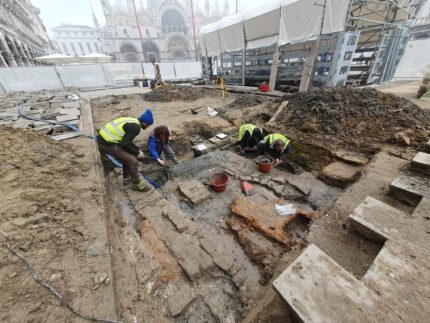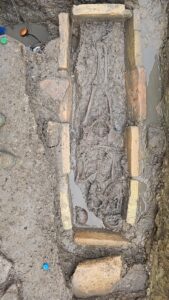
Tradition has it that the first San Geminiano church was built by order of the Byzantine general Narses in the mid-6th century A.D. in appreciation of Venice’s contributions to his reconquest of Ravenna. Saint Mark the Evangelist wasn’t even the patron of Venice then (Saint Theodore was), so there was no Piazza San Marco. For that matter, there weren’t even any doges until the 8th century, and it was only in the 9th century, after the relics of St. Mark were smuggled out of Abbasid-ruled Alexandria in a basket filled with pork by Venetian merchants, that Mark became the city’s new patron.
The Church of San Geminiano burned down in 976 and a new one built in the first decade of the 11th century. That one burned and collapsed after an earthquake in around 1108. The reconstructed church was then demolished in the late 12th century to accommodate the expansion of Piazza San Marco. It was relocated to another location on the newly-expanded Piazza. The 12th century church was demolished in the early 16th century and the new one relocated again. This last one would stand until 1807 when it was demolished by Napoleon to make way for a new wing of the long colonnaded buildings that embrace three sides of the piazza.

* This article was originally published here








No comments:
Post a Comment